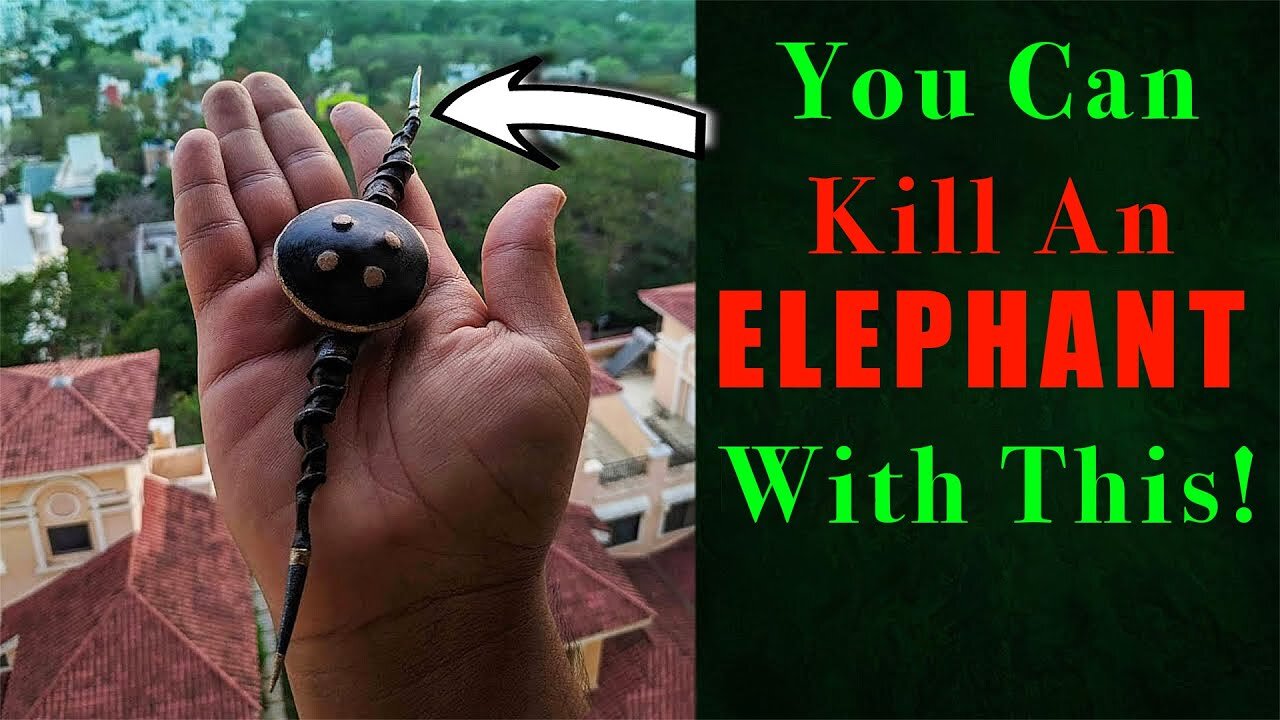Premium Only Content

Oldest Weapon in the World? Madu / Maduvu - Capable of Attack and Defense | Hindu Temple |
Instagram :- https://instagram.com/praveenET
Twitter :- https://twitter.com/IamPraveenMohan
Email id :- phenomenaltravelvideos@gmail.com
This is my PayPal account if you would like to support me :- https://paypal.me/hindutvawadi
0:00 - Ancient Indian Weapon
0:25 - Melee Weapon
1:01 - Uses of Madu
1:43 - Made of horns
2:52 - Islamic Symbols on Madu
3:40 - Enhanced Madu
4:15 - Origin of Madu
4:39 - Original Form
5:01 - Oldest Form
5:14 - Natural Weapon
5:49 - General Analysis
6:50 - Conclusion
Special thanks to Jayesh Kumar Pandian - His Channel:
https://www.youtube.com/channel/UChoS...
Jayesh's Facebook: https://www.facebook.com/jayesh9430
Hey guys, today we are going to look at an ancient Indian weapon called Madu. Most ancient weapons like swords or knives are used for attacking, and some devices like shields are used for defending, but this weapon is unique because it combines both attack and defense. This is a very effective melee weapon. Now, what's a melee? We usually think of battles as an organized fight between 2 sides which have these perfect formations, however when the actual fighting begins, all hell breaks loose, and you are engaged in close combat fighting with many people at a time. This kind of confused fight in close combat is called a melee.
So, in an actual fight like this, it is wise to have one weapon you can use for both attacking and defending. Better yet, you can parry a thrust from one enemy, and kill another enemy using this same weapon. Even if you lose your sword in a fight, the Madu will be a very effective weapon for attack and defense. Because if you lose your sword and are just holding a shield, you cannot attack your enemy. In India, soldiers preferred the Maduvu instead of a regular shield.
So what is a Madu made of? A Madu typically consists of two antelope horns pointing in opposite directions. Specifically, the horns of an Indian antelope known as blackbuck were used to make Madus. These blackbucks have the strangest shape of horns.. they are spiral and they also have ridges. I mean you can see right away that the horns of this animal are quite deadly, they can pierce through your body and cause a very deep wound. And these 2 horns are connected at the center by 2 cross bars which are also used as handles. If you look carefully, the crossbars extend beyond the horns and on one side it actually connects to a shield. And on the front side, you can see these dots, and on the other side, we can see how the cross bars are set up so they won't come out. These Madus you are looking at are original antique pieces which are a few hundred years old, collected by my friend Jayesh. It is really interesting to see Islamic symbols like the crescent placed on top of these shields.
When Arabs and Mongols came to India, they were fascinated by the efficiency of Madu, so they immediately started using them. They employed other animals like cheetah to hunt the blackbuck and then used the horns to make Madu. The shields were mostly made out of metal, but this shield is made of leather. In the Middle East, this weapon is referred to as "Fakir Horns". Some even tried to enhance the Madus , they began making Madus which are entirely made of metal, you can see this is completely made of metal. While original madus simply used the horns natural sharpness, some made it even more deadly, pointy metal caps were added to the tips of the horns to make them stronger and sharper.
Now, let's go into the origin of this weapon. This weapon originated in South India, the word Maduvu means "a device that causes a deep hole" in Tamil language, and you can see why it has been named this way, it does put a deep hole through the body of the enemy. There is a simpler form of this weapon which is not only considered the original form of Madu, but also the oldest weapon in the world. This weapon does not have a shield at all and is just made of 2 horns and a fastener which holds them together.
#Weapons #India #Search4Truth
-
 1:08:43
1:08:43
The Charlie Kirk Show
5 hours agoTHOUGHTCRIME Ep. 74 — Charlie's Campus Return? Robo-Butlers? Garden of American Heroes?
58.8K13 -
 1:09:53
1:09:53
Slightly Offensive
5 hours ago $3.25 earnedIs the US Headed for MORE WAR Under TRUMP? | Guest: Scott Horton
30.5K8 -
 58:29
58:29
The StoneZONE with Roger Stone
5 hours agoRoger Stone Hails Confirmation of Kash Patel, Trashes Schiff for Attacks On Patel | The StoneZONE
37.2K10 -
 48:44
48:44
Man in America
10 hours agoA MASSIVE Global Financial Reset Is Coming—Are You Ready?
27K3 -
 1:15:42
1:15:42
Precision Rifle Network
1 day agoS4E5 Guns & Grub - The Best Rifle Under $2000
35.5K5 -
 1:02:54
1:02:54
Glenn Greenwald
1 day agoSouth Korean Economist Ha-Joon Chang on the Economic World Order, Trump's Tariffs, China & More | SYSTEM UPDATE #410
69.6K44 -
 1:02:27
1:02:27
Donald Trump Jr.
10 hours agoBye Mitch, plus Kash confirmed, Interview with AJ Rice | Triggered Ep.218
120K70 -
 1:12:27
1:12:27
The Amber May Show
12 hours ago $1.97 earnedWomen Of Rumble 02-20-25
29.3K7 -
 41:18
41:18
Kimberly Guilfoyle
10 hours agoToday, We Kash in on Equal Justice, Live with Ryan Walters & Daniel Turner | Ep.198
94.2K22 -
 1:36:50
1:36:50
Redacted News
9 hours agoThe TRUTH in Ukraine has been EXPOSED by Trump and they are melting down | Redacted w Clayton Morris
133K224